For the last few years now, the automotive industry has been on a roll. Most of the new car introductions have looked great, and one by one the ugliest cars in the market have been discontinued. For 2015, there has been a true bloodbath of ugly cars. Four cars that were on last year’s list have been put to a well-deserved death: Honda Insight, Toyota FJ Cruiser, Nissan Murano CrossCabriolet, and Nissan Cube. And none of the new or redesigned models for 2015 are really ugly enough to make the list.
As such, the four ‘new additions’ at the bottom of the list are cars that have been around for one or more model years, but were edged out in previous lists by uglier (but now-discontinued) cars. The fact that the ‘average ugliness’ across the list is much less than in previous years should be seen as a commentary on the positive direction of modern auto design.
The criteria for inclusion is the same it has always been. I don’t include models that aren’t sold in the United States. I don’t include models that sell in low volume (and volume is defined completely subjectively based on how many I see on the highways in the Washington, DC, metropolitan area). I don’t include exotic, military, or special-purpose vehicles—so no super-cars, tanks, or postal trucks. I also don’t include vehicles reserved exclusively for the commercial market, such as the truly horrific Ram Promaster.
This list is entirely my personal opinion. I encourage your comments—whether they be nominations of ugly cars I may have missed, or impassioned defenses of the ones I didn’t. And if you own one of the cars on this list, well, don’t take it personally.
The List
-
Scion xB
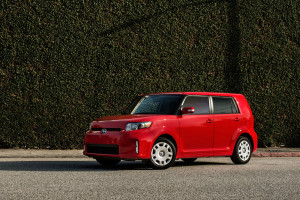
Scion xB Toyota’s Scion brand has never been great in the styling department. Indeed, the first round of Scions were a recurrent presence on many of the early ‘ugly cars’ lists. Eventually, that first round got redesigned or replaced and before too long all of the Scions had improved enough to drop off my lists entirely. They never stopped being ugly, they just stopped being ugly enough to land in the top-ten. But now, with the 2015 ugly car bloodbath, the Scion xB marks the brand’s triumphant return. It isn’t nearly as bad as the original xA and xB, or the just-discontinued xD, but that’s not saying much. Like some of the other cars on this list, the xB is just a cheap econo-box trying desperately to be edgy . . . and failing.
-
Jeep Cherokee

Jeep Cherokee The Jeep brand, part of Fiat Chrysler Automobiles, makes its ugly car debut with the Jeep Cherokee. It was introduced to much fanfare as a 2014 model, and while it did not rank in the top ten last year, it still got the ‘dishonorable mention’ for being a big step in the wrong direction for its venerable brand. The new Cherokee is built on the Alfa Romeo Giulietta platform, along with the Dodge Dart and the Chrysler 200, and yet they still managed to make it perform reasonably well off-road. Even so, it fails as a Jeep because it is really just a crossover, and Jeep ought to be selling the alternative to the crossover. But what really lands the Cherokee on this list is its revolting front end, which imported just enough idiocy from the Nissan Juke to ruin an otherwise bland but inoffensive crossover.
-
Kia Soul

Kia Soul The Kia Soul has always hovered around the bottom of my list. Most recently, it placed in the number ten position in 2013, but then dropped off the bottom with its 2014 redesign. This year, given the bloodbath among other ugly cars, it rolls back into the number eight position. The Soul is a prime example of trying too hard. It is meant to be hip and trendy and edgy so that it might appeal to young car-buyers, but at its heart it is just a Kia Forte economy sedan with some extra space. It’s not edgy, it’s cobbled together in Kia’s bargain-basement. There is nothing wrong with a low-end econo-box, but designing it as if it’s something special just ends up making it look stupid.
-
BMW X6
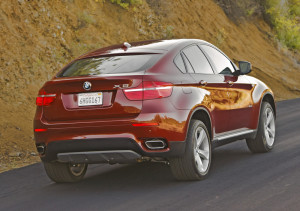
BMW X6 Imagine that you’re the world’s number-three most bizarre car buyer. You want a BMW, but you don’t want all the nimble performance and understated elegance that usually comes with BMW products. You would prefer a brash, obnoxious German rip-off of the Honda Crosstour. You don’t want an actual crossover, you want a BMW 5-series sedan on stilts with a lame attempt at a hatch-back bolted onto the back. The BMW X6 is branded as a ‘sports activity coupe,’ which is interesting because it isn’t sporty, doesn’t have space for activities, and isn’t even a coupe. So much for German precision, eh? Oh, and the fact that it starts at nearly $60,000 doesn’t help it any either. For that kind of money, you could buy a garage-full of better looking cars.
-
Toyota Prius

Toyota Prius The Toyota Prius was perilously close to falling off this list last year, but with the timely demise of so many other ugly cars it makes a leap to the sixth position. From the beginning, the Prius was a car that was meant to be ugly. The kind of buyers that Toyota meant to attract are those who don’t care one bit how it looks . . . as long as it stands out enough for them to lord their high-minded environmentalism over everybody else. Of course there are countless other fuel-electric hybrid options available today, including the Ford Fusion, Hyundai Sonata, Honda Civic, Volkswagen Jetta, Ford Escape, and Ford C-Max. Toyota itself offers the Prius C, Camry, Highlander, and Lexus-branded CT-200h and NX-300h. Saving the Earth does not require driving a moldy cheese-wedge anymore.
-
Honda Crosstour

Honda Crosstour Imagine that you’re the world’s number-two most bizarre car buyer. You don’t want a four-door sedan, or a wagon, or a crossover, or an SUV. No, you want to take a four-door sedan, give it a hatchback (but slant it so low that you can’t actually use it), lift the suspension so it has more ground clearance but still not enough to actually go off-road, and then you want to pay mid- to full-size crossover money for it. The Crosstour is the ultimate parts-bin mess, put together from an aspirational Accord with a lift-kit, a CR-Z hatch, and miscellaneous Highlander and Odyssey parts. It doesn’t work, Honda. It never will. Please put this monstrosity out of its misery.
-
Honda CR-Z
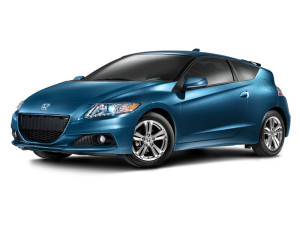
Honda CR-Z Imagine that you’re the world’s number-one most bizarre car buyer. You want a car that has the utility of a two-seat sports coupe, the performance of an Earth-friendly hybrid, and the looks of a 1980s economy hatchback with some pieces from the Honda parts-bin tacked on. Oh, and you also want to spend over $20,000 for your impractical, plodding Earth-mobile. The Honda CR-Z is supposed to be the ‘spiritual successor’ to the Honda CR-X, which actually was a 1980s economy hatchback, but the CR-X was reasonably priced for what it was and didn’t look any worse than anything else at the time. The CR-Z, however, looks like an amalgamation of the absolute worst elements from across the last twenty years of Honda design.
-
Smart Fortwo
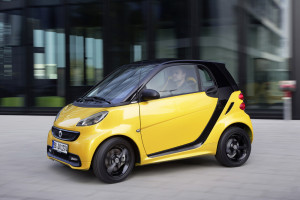
Smart Fortwo As a general rule, if a company feels the need to tell you that something is ‘smart,’ it isn’t. The Smart Fortwo is a prime example. Daimler builds this compact city-car in France, which makes sense . . . where else could a car so useless, so out-of-touch with reality, and so ugly somehow pick up an air of high-minded pretension? City dwellers who actually need small, affordable, park-anywhere transportation and don’t care about performance or practicality can save thousands of dollars and get a motor-scooter. People who need an econo-box to get their groceries and make an occasional out-of-town trip can get twice as much car for the same price, and look smarter in the process.
-
Mini Coupe
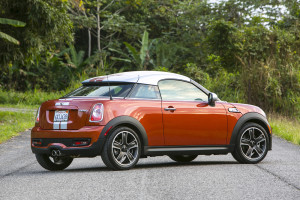
Mini Coupe BMW’s Mini brand makes a line of small, nimble, attractive cars, including the iconic Hardtop, the Convertible, and the more practical four-door Countryman. They also make the somewhat less impressive Roadster (a two-seat convertible) and Paceman (a two-door Countryman). But the worst of the bunch is, by far, the Mini Coupe. It’s a Hardtop with half as many seats and none of the looks. Well maybe that’s too harsh. . . . The front-end looks fine, and the rear-end looks okay. But that roof line seems to have been drawn by an unhappy kindergartener with a thing for mullets. And that might be giving it too much credit. It is quite possibly the worst design decision ever made by BMW . . . and yes, I know about the ‘Bangle butt.’
-
Nissan Juke

Nissan Juke In 2013, I gave the Nissan Juke the top spot on this list . . . and then in 2014 I realized that I had been too hard on it, and dropped it to the number three position. Unfortunately for the Juke, last year’s number one and number two cars have been discontinued. And really, the Juke does still belong at the top (or bottom) of the pack. Who thought it was a good idea to design a car to look like a depressed frog? Its headlights are in the wrong place, it’s fog-lights are where the headlights ought to be, and its tail-lights look like hockey sticks. According to Nissan’s web site, “The Juke isn’t just a crossover—it’s a sport cross Sport Cross.” I’m guessing that they said ‘sport cross’ twice (and even capitalized it once!) because, after making up the term, they couldn’t think of anything else nice to say.
Dishonorable Mention
-
Mitsubishi Motors

Mitsubishi Motors Quick, name a car model produced by Mitsubishi.
You might have thought of the groundbreaking Mitsubishi Eclipse, or the four-door Galant, or maybe the go-anywhere Montero and Montero Sport SUV’s, or the near-luxury Endeavor SUV. If any of those are what came to mind, I have bad news for you. . . . The Eclipse and Galant were discontinued after the 2012 model year. The Montero and Montero Sport were dropped from the U.S. market after the 2004 and 2006 model years respectively (although they are still built and sold for other markets). The Endeavor went out of production after the 2011 model year.
In fact, Mitsubishi’s entire product line in the U.S. market is the i-MiEV niche electric car, the Mirage subcompact, the Lancer compact, the Lancer EVO sports car, the Outlander Sport compact crossover, and the Outlander mid-size crossover. The Mirage, which was introduced for 2014, is the first subcompact Mitsubishi has sold in the U.S. since 1996 . . . and aside from it, only the two Outlander siblings have seen a redesign in the last five years (2011 and 2014 respectively).
Mitsubishi has completely ceded the lucrative mid-size sedan market to its competitors, and has effectively ceded the compact market by continuing to sell a Lancer design that dates to 2008 . . . one that wasn’t even very competitive then. It is still putting up a fight with its Outlander crossovers, and yet losing to its better and more well-known competitors.
Mitsubishi’s only ‘halo’ car that got some car-lovers’ attention was the Lancer EVO, a high-performance, four-door, all-wheel-drive sports car that went head-to-head with the Subaru Impreza WRX. But the WRX was redesigned in 2011, and is expected to be redesigned again for 2016, while Mitsubishi is still selling an EVO from back when George W. Bush (R) was president. And they have now announced that they will retire the Lancer EVO after the 2015 model year, thereby ceding the four-door, all-wheel-drive sports car market to Subaru (at least until the Ford Focus RS goes on sale). And this is Mitsubishi’s pattern: create compelling cars, and then either neglect them until they die or replace them with cars that people like less than the models they replaced.
Here is some perspective: Mitsubishi sold 62,310 Eclipses in the U.S. market during the 1997 model year . . . just Eclipses. In the 2014 model year, Mitsubishi only managed to sell 62,227 cars in the U.S. market total. The whole company, its entire product line, has been outsold in the U.S. market by one car it made almost twenty years ago. Even though the U.S. has a larger and more vibrant automotive market now than we did twenty years ago, Mitsubishi has still managed to lose about seventy percent of their sales volume. Similarly positioned companies like Subaru, meanwhile, have been growing by leaps and bounds.
Isuzu and Suzuki have already abandoned the North American market because they couldn’t cut it. Their missteps led them right out of one of the most lucrative automotive markets in the world. And unless Mitsubishi does something, and does something fast, I’m guessing they’ll be following in those footsteps soon.
